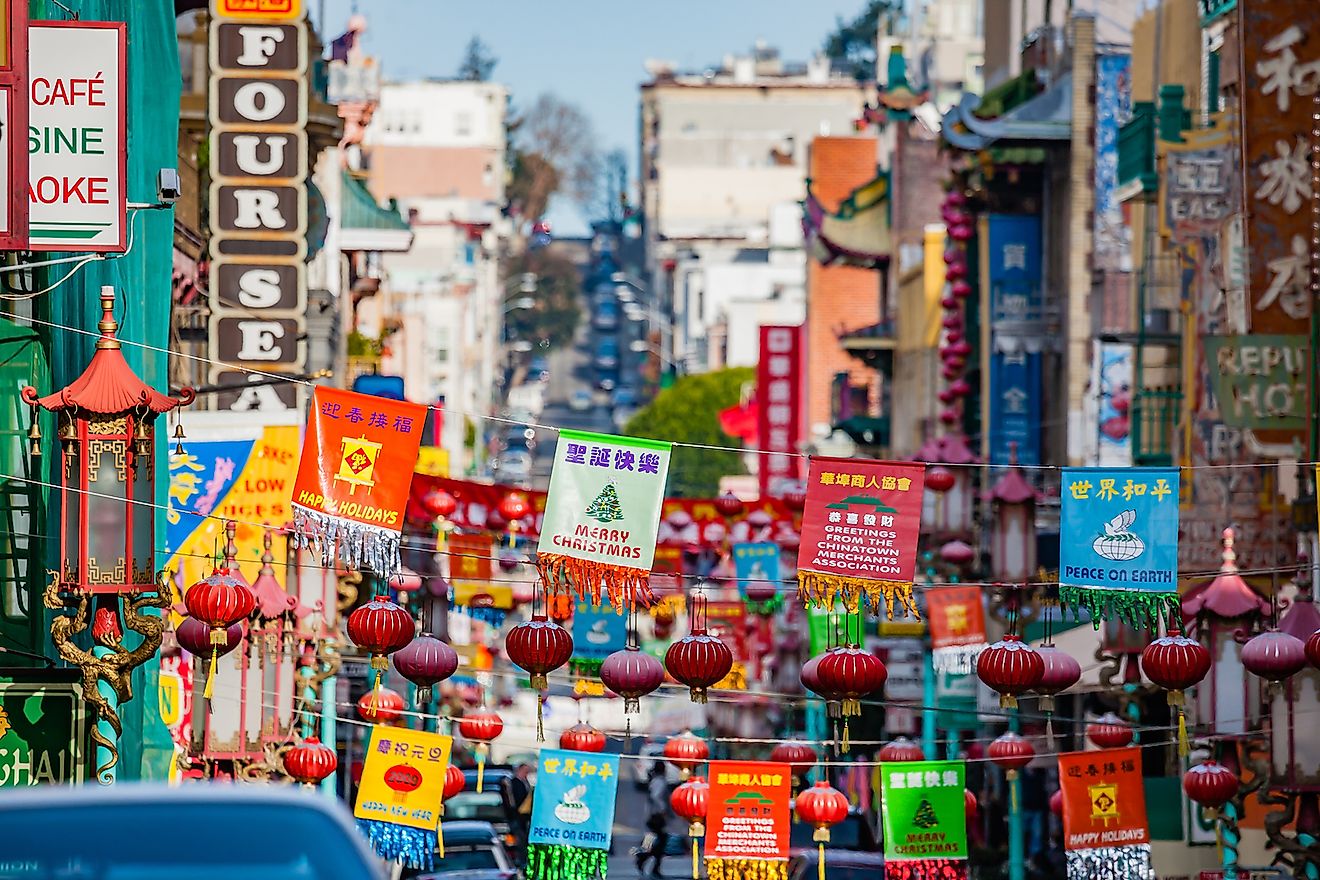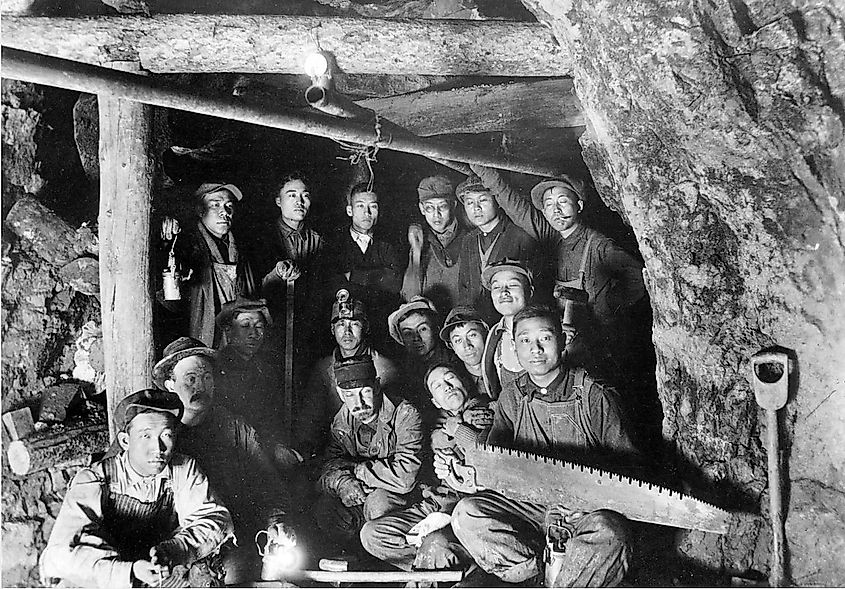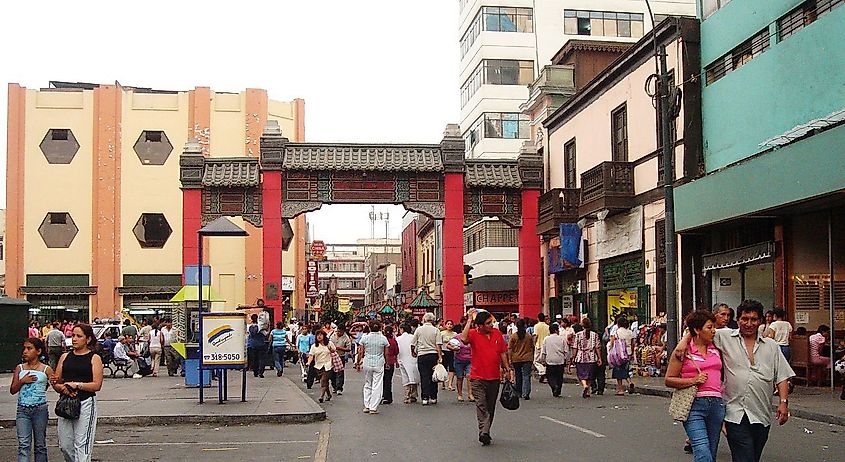Countries With Most Chinese Outside China

- Since 1990 the migrant Chinese population worldwide has more than doubled, as highly skilled and well-educated professionals journey abroad to study, invest, and promote trade.
- There are more than 10,000 Chinese owned industries and business ventures in Africa.
- China's one child policy resulted in over 120,000 Chinese children, mostly girls, adopted by North American families between the 1990s and early 2000s.
Today it is estimated that 35% of migrants - that is over 70 million people - are from China and India. The majority of those, approximately 46 million people, identify as Chinese living outside of Macau, Hong Kong, Taiwan and China. The exact numbers are difficult to determine, however, as there exists a variety of definitions used by organizations that collect population data to describe Chinese diaspora. In some calculations, Chinese migration refers only to those born in China and have since moved for temporary or permanent settlement to another country. Other organizations include in their numbers those who are born abroad but continue to identify as having Chinese ethnicity, culture, and language. The second category often includes first generation children of Chinese migrants. For example, in its calculation of the Chinese population worldwide the United Nations estimates there are 10 million migrants born in China now living in host countries, whereas under the broader definition of Chinese ethnicity that population is estimated at 45 million worldwide.
Regardless of the metrics used to calculate total numbers, be it born in China or those who identify based on ancestry and language, the history of Chinese migration and exploration dates back hundreds, if not thousands, of years. Once an empire known for its vast borders and seafaring dominance, China became isolationist under the Ming Dynasty of the 15th-century. It was only about 150 years ago during the 19th-century that the recent phenomenon known as the Chinese diaspora began as a result of the massive social and economic upheaval of the Industrial Revolution.
Chinese In South East Asia

By 1850 the Industrial Revolution had taken hold of economies worldwide. Factories mass-produced goods for international consumption. Exotic goods from Southeast Asia, including tea, pottery, and textiles, were in high demand throughout Britain and her global colonies as well as the United States and Europe. Shipping companies such as the East India Company travelled from Asia to ports worldwide, carrying not only manufactured goods, but also a growing number of mostly male Chinese laborers. These workers from the coastal provinces were eager to leave their impoverished homes in search of better employment opportunities available in the more prosperous economies of neighbouring Indonesia, Philippines, Thailand, and later Singapore. A major pull to these regions was the proximity to their homeland, as well as similar culture, language, and the practice of the Buddhist religion.
Today in Southeast Asia millions of descendants of these early immigrants still speak Chinese languages and identify as Chinese despite having been born in the host countries. In Singapore for instance, those who identify as ethnic Chinese makeup 74% are the population. Thailand cites 11% of its population as ethnically Chinese, while its capital city of Bangkok is home to the largest Chinatown in the world.
Chinese In North America

Chinese immigration to North America, specifically Canada and the United States, has occurred in waves since the 19th-century. In the mid-to-late 1800s, Chinese laborers seeking economic opportunities were brought to North America under labor schemes to provide a cheap workforce in the mining and railroad industries. More often than not these Chinese laborers we're paid significantly less than their white counterparts and used for dangerous work with explosives. Rampant racism eventually led to various laws limiting or preventing immigration Asian immigration to Canada and the United States of ethnic Chinese. These laws were later repealed.
In the twentieth century, from 1950 to 1980, widespread violence and a political shift in China prompted mass immigration. Both Canada and the United States reopened their borders to accept those fleeing from the new communist regime in China in a second wave of Chinese immigration to North America. A third wave of Chinese migration occurred from the 1990s and the early 2000s as more than a hundred and twenty thousand Chinese children, mostly girls, were adopted by North American families in response to that nation’s one child policy.
Today the US Census reports that 80% of immigrants from China are highly educated and possess personal wealth, with international students accounting for a large amount of the current temporary and permanent migration to North America.
Chinese Immigration To Peru

At first glance it may seem like Peru is an unusual country to report a high percentage of Chinese immigrant population. While some metrics estimate that 3% of the Peruvian population is Chinese, other sources report as much as 20% when those with a mixed heritage, or self-identifying as Chinese due to ancestry, culture, and language, are included in the statistics. As with the United States and Canada, the first wave of Chinese immigration to Peru occurred during the Industrial Revolution of the 18th century. With mining and railroads as the major industries requiring laborers, by 1850 the population of Chinese migrants in Lima was large enough to establish a Bairro Chino, or Chinatown. When Peru's economy dwindled immigration slowed, but as one of the first Latin American countries to establish diplomatic ties with China in the 1970s immigration resumed.
In 2010 a free trade agreement signed between China and Peru has ensured a steady flow of migration between the two countries continues, with mining once again dominating the economic exchange.
The Future Of Migration
Since 1990 the migrant Chinese population worldwide has more than doubled, as highly skilled and well-educated professionals journey abroad to study, invest, and promote trade. Much of this new wave of immigration includes executives, diplomats, as well as students on government-sponsored scholarships. Economists cite over 10,000 Chinese-owned business and industrial ventures on the African continent to suggest where the next major wave of immigration will occur, while currently Oceania, that is Australia, New Zealand, and neighboring islands, have quadrupled in the growth of Chinese population in the last twenty years. With the forces of globalization and the technological revolution continuing to make our world smaller and faster, the push and pull factors of better jobs and prospering economies will continue to lure migrants around the world.
10 Countries With Most Chinese Outside China
| Rank | Overseas Country | Chinese expatriates in millions |
|---|---|---|
| 1 | Indonesia | 7 |
| 2 | Thailand | 7 |
| 3 | Malaysia | 6.4 |
| 4 | United States | 3.8 |
| 5 | Singapore | 3.6 |
| 6 | Peru | 1.3 |
| 7 | Canada | 1.3 |
| 8 | Vietnam | 1.3 |
| 9 | Philippines | 1.2 |
| 10 | Burma | 1.1 |











